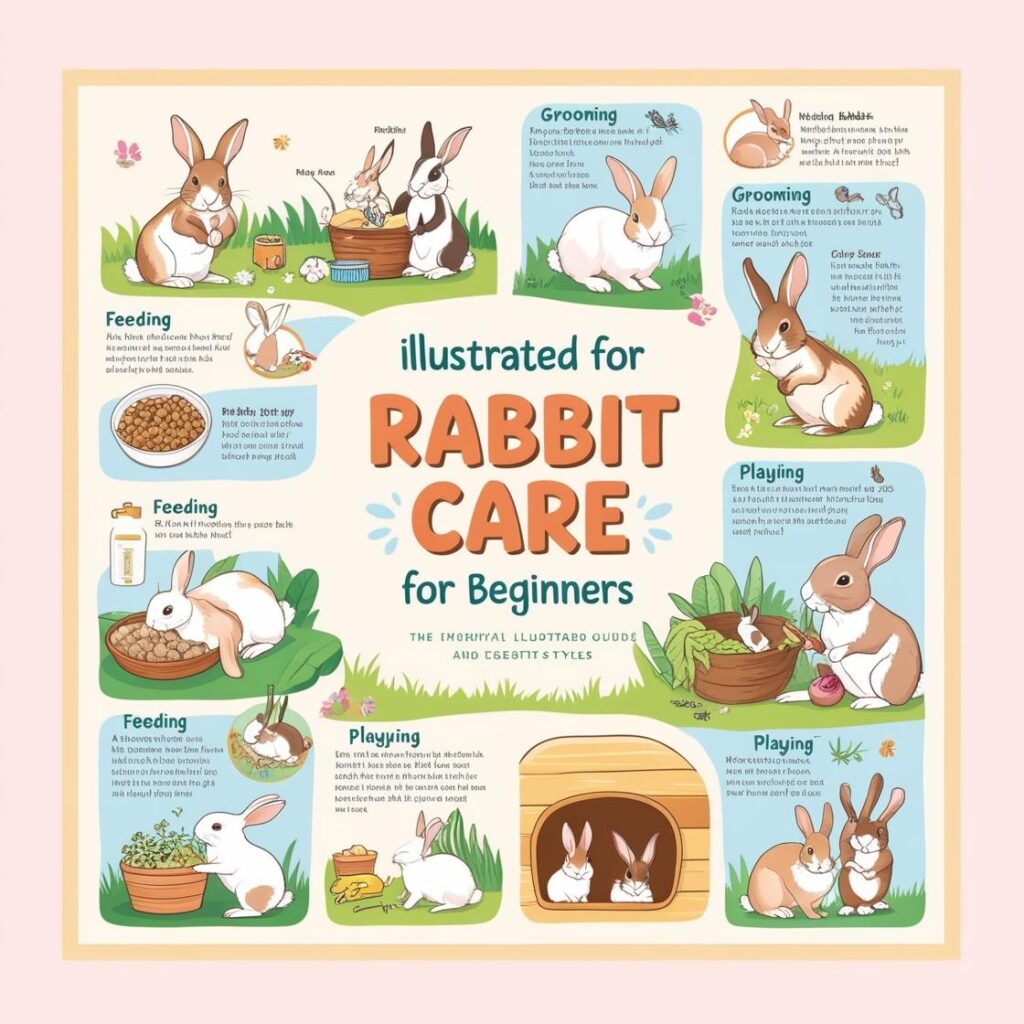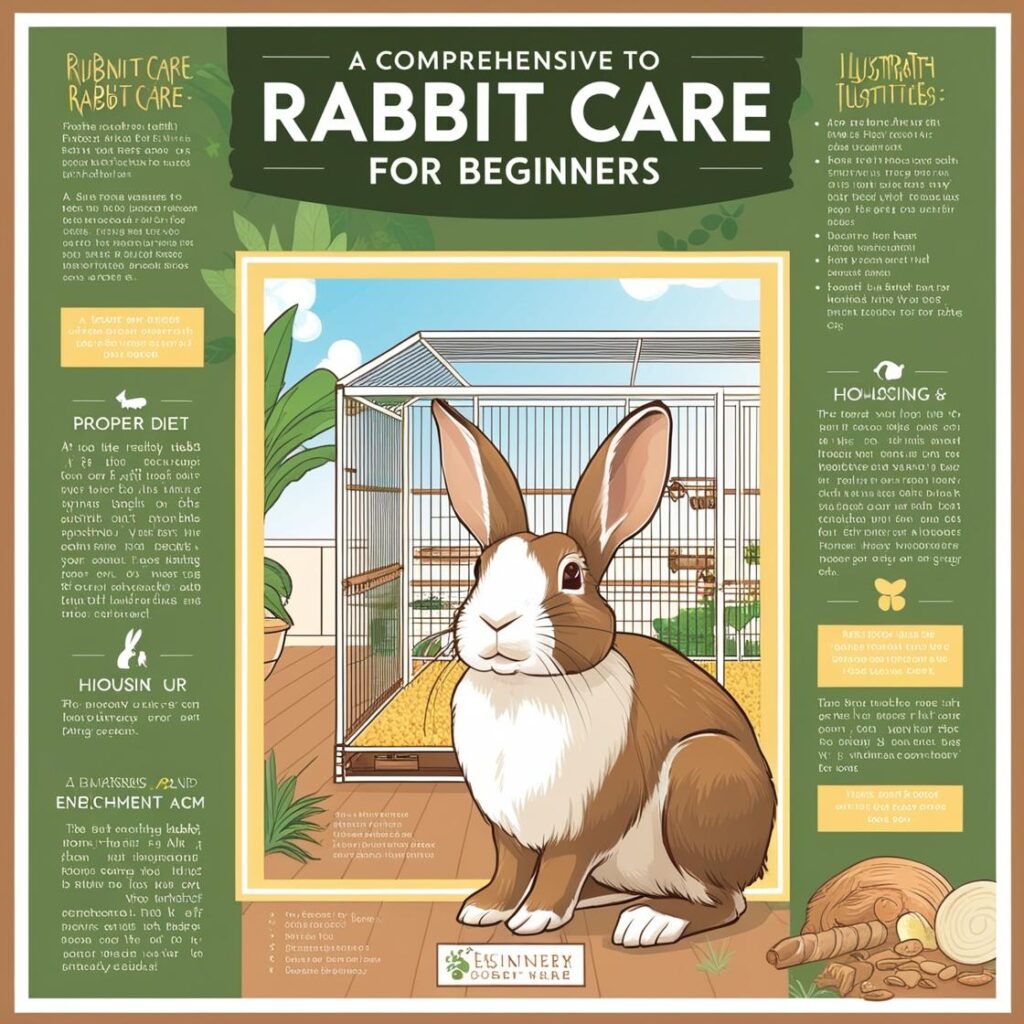When considering domesticated pets, rabbits are often overlooked in favor of more traditional choices like cats and dogs. However, these gentle creatures are increasingly becoming popular companions, and for good reason. Rabbits not only have unique personalities and charming behaviors, but they can also form strong bonds with their owners. That said, owning a rabbit requires a commitment to their care and well-being. This guide is designed to provide beginners with essential knowledge about how to take care of a rabbit, ensuring a happy and healthy life for your new pet.

Understanding Your Rabbit’s Needs
Rabbits are social creatures that thrive on interaction, both with their human families and other rabbits. Before bringing a rabbit home, consider their basic needs:
- Socialization: Rabbits are not solitary animals by nature. They can become lonely and develop behavioral issues if left alone for extended periods. If you’re considering a single rabbit, be prepared to spend ample time engaging with it each day. Alternatively, consider adopting pairs, as they can keep each other company.
- Lifespan: With proper care, rabbits can live between 8 to 12 years, and in some cases, even longer. This long-term commitment requires careful consideration of your lifestyle, especially if you have children or travel frequently.
- Space Requirements: Although rabbits don’t require as much space as dogs, they do need room to exercise, explore, and express their natural behaviors. A spacious and stimulating environment is crucial for your rabbit’s physical and mental health.
Housing Your Rabbit
Creating a comfortable and secure living space is vital. Here are essential elements to consider when setting up your rabbit’s home:
- Cage Size and Setup: A rabbit’s cage should be at least four times the size of the rabbit when they are fully stretched out. Look for cages designed specifically for rabbits, as they often have larger openings and removable trays for easy cleaning.
- Litter Box Training: Rabbits are generally clean animals and can be litter trained. Use a litter box filled with paper-based or aspen shavings (avoid clay-based litters which can be harmful), and place it in a corner of their cage. Consistently placing droppings in the box can help your rabbit learn where to go.
- Safe Environment: Make sure your rabbit’s living area is bunny-proof. Rabbits love to chew, and they can be attracted to wires, furniture, and houseplants, many of which may be unsafe for them. Invest in chew-proof housing or safe materials they can gnaw on.
Nutrition: A Balanced Diet
A rabbit’s diet is paramount to its health. Here are the key components:
- Hay: The primary staple of a rabbit’s diet should be hay—preferably timothy hay or other grass hays. Hays are essential for their digestive health and help prevent obesity.
- Fresh Vegetables: Introduce a variety of leafy greens (like romaine lettuce, kale, and cilantro) into their diet. Ensure any new food is introduced gradually to prevent digestive upset.
- Pellets: While hay should make up the majority of their intake, high-quality rabbit pellets can supplement their diet. Look for pellets that are high in fiber and low in protein.
- Water: Fresh and clean water should always be available. Use a heavy ceramic bowl or a water bottle to prevent spills.
- Treats: Fruits can be offered as treats but should be given in moderation due to their high sugar content. Suitable options include apples (without seeds), berries, and bananas.
Regular Health Maintenance
Regular health checks and veterinary care are vital for rabbit ownership:
- Veterinary Visits: Schedule annual check-ups with a veterinarian experienced in treating rabbits. Regular examinations can help detect health issues before they become serious.
- Dental Care: Rabbits’ teeth grow continuously, making it essential for them to have hay and chew toys to wear them down naturally. Look for signs of dental problems, such as difficulty eating or drooling.
- Grooming: While rabbits groom themselves, they benefit from regular brushing to prevent matting and hairballs, especially during shedding seasons. This is also an excellent opportunity to bond with your pet.
- Spaying/Neutering: If you intend to keep your rabbit as a pet, consider spaying or neutering. This helps prevent many health problems and undesirable behaviors, such as territorial marking and aggression.
Behavior and Social Interaction
Understanding rabbit behavior can significantly enhance the quality of your relationship:
- Play and Exercise: Rabbits require plenty of exercise to stay healthy. Create a safe play area without hazards, and supervise their time outside the cage.
- Toys: Provide a variety of toys to stimulate their minds and bodies. Simple items like cardboard boxes, tunnels, and wooden chew toys can keep your rabbit entertained.
- Social Interaction: Spend time with your rabbit daily through petting, gentle handling, and play. They often enjoy being petted, especially on the forehead and back, but always pay attention to their body language. Tuning into their cues will deepen your bond.
- Training: Rabbits can be trained to do basic tricks, like hopping through hoops or responding to their name. Positive reinforcement (using treats) works well for rabbit training.
Recognizing Signs of Distress or Illness
Being alert to changes in your rabbit’s behavior can help catch health problems early. Signs to watch for include:
- Changes in Appetite: A decrease in food or water consumption may indicate health issues.
- Lethargy: If your rabbit is hiding or sleeping more than usual, this could be a sign of discomfort or illness.
- Digestive Issues: Pay attention to the frequency and consistency of their droppings. Diarrhea or the absence of poop can indicate serious health concerns.
- Behavioral Changes: Sudden aggression or withdrawal can signify emotional or physical distress.
If you notice any signs of illness or significant behavior changes, consult your veterinarian promptly.
Conclusion
Caring for a rabbit can be a deeply fulfilling experience, but it also requires dedication, knowledge, and vigilance. By understanding their needs—ranging from proper diet and housing to social interaction and health maintenance—you can create a nurturing environment for your rabbit to thrive. Remember that each rabbit is an individual with its own personality and preferences, so patience and observation will go a long way in fostering a strong bond between you and your new pet. As you embark on this rewarding journey, take the time to learn and embrace the wonderful quirks and behaviors that make rabbits such unique companions.
